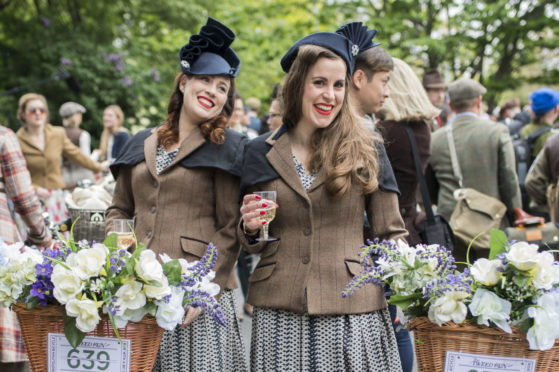
One of the most iconic textiles of the fashion industry, tweed is synonymous with classic style.
Paul Walker, co-founder and director of Edinburgh Old Town-based tweed specialists Walker Slater tells Sally McDonald the Honest Truth about a fabric that has stood the test of time…
How long has Tweed been around?
Tweed has a romantic history, dating back to the 18th Century. But the term “tweed” was coined accidentally in 1826 due to a misread label on a shipment from weaver William Watson & Sons that stated “tweel”, the Scots word for twill. Coincidentally, it was still appropriate as the fabric was worn by gentlemen shooting or fishing near the river Tweed. A symbolic style was born, with tweed becoming a classic Scottish material.
Has tweed always been linked with luxury?
Tweed was crafted for practical wear for peasants in outdoor work such as farming in harsh and volatile weather. Wool repels water; with its thick and coarse texture, it is durable and insulative. It emerged as a cottage industry in Hawick. As it is produced from natural wool each tweed garment is unique. By choosing different breeds of sheep, garment makers plan patterns that emerge naturally.
How did the farmer’s favourite become so popular?
In the first part of the 19th Century, money was becoming an issue for many Highland lords whose properties interested the likes of English noblemen and aristocrats. As the market to rent or buy Scottish country estates grew, so did the camouflage fashion for hunting, shooting, and fishing activities. Lord Lovat created the Lovat Mixture as “a protective colour designed for use in the hills”. This mix, still popular today, dates back to his instructions given in 1840 where five colours and white were carded together to make a camouflage yarn ideal for stalking deer.
When did the fabric become popular with Royalty?
In 1852 Queen Victoria’s husband Prince Albert bought Balmoral Castle in Aberdeenshire.
Prince Albert commissioned the production of his own Balmoral tartan in grey and granite tones with hints of blue and red and woven as tweed. And so, the first Estate Tweed was born, used to identify people who lived and worked on the estate. Subsequently, it became custom for other estate owners to commission their own design.
What other notable persons from history have worn tweed?
Tweed was worn by Sir Edmund Hillary and Tenzing Norgay on the first ascent of Mount Everest.
Tell us about modern tweed?
Today, tweed is more closely aligned to its royal rather than ancestral roots, establishing an enduring place in the fashion industry. Now, a broad selection of sophisticated pieces are sold around the world. Coco Chanel’s couture jacket produced from Linton Tweed – created in Carlisle by Scotsman William Linton – has, since its first appearance in 1954, become a timeless classic and one of the most desired pieces of clothing that is reinvented each year.
Are there any surprising facts attached to tweed?
There are different varieties of tweed, but Harris Tweed is the only fabric that has its own Act of Parliament. It has a complex design where the weaver has to tie in more than 1,400 individual threads by hand. The fabric must be made from pure virgin wool, handwoven at the home of the weaver in the Outer Hebrides and then returned to the mill where it is authenticated by a stamper with the Orb trademark.
The Harris Tweed Orb is the oldest British trademark in use, dating back more than a century. Heriot-Watt University has collaborated with Harris Tweed Hebrides to develop woven fabric to be used for interiors and fashion. With a history that propelled this amazing fabric into luxury fashion worn by everyone from aristocrats to the fashion-conscious, tweed truly has stood the test of time.

Enjoy the convenience of having The Sunday Post delivered as a digital ePaper straight to your smartphone, tablet or computer.
Subscribe for only £5.49 a month and enjoy all the benefits of the printed paper as a digital replica.
Subscribe